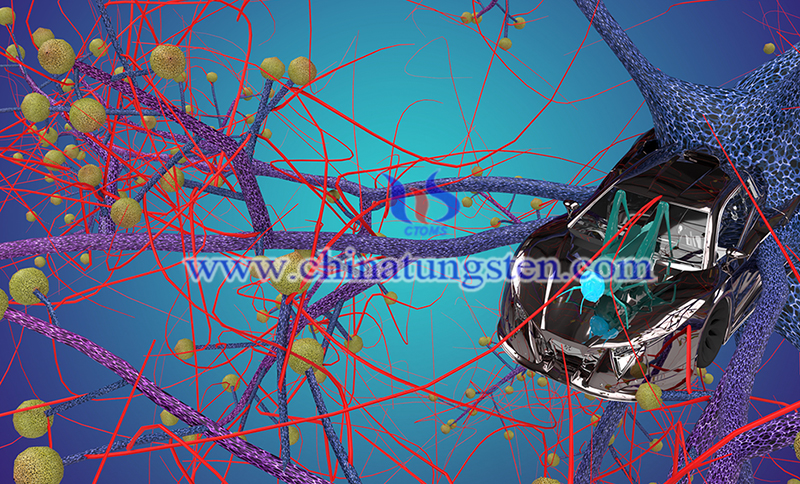US Scientists Develop Molybdenum Disulfide Light Sensor
- Details
- Category: Tungsten's News
- Published on Monday, 12 October 2020 11:31
The US scientists learned from locusts and developed a light sensor based on a single layer of molybdenum disulfide. Autonomous driving technology is in full swing, and in order to make self-driving cars, drones or mobile robots have keen anti-collision capabilities, the Pennsylvania State University research team began to learn from the special sensing capabilities of "locusts" by studying locusts Unique avoidance response, research and development of low-power collision sensors that can be used for self-driving cars, drones, etc.
Bio-inspired vision sensors are particularly appropriate candidates for navigation of vehicles or mobile robots due to their computational simplicity, allowing compact hardware implementations with low power dissipation. The lobula giant movement detector (LGMD) system in the locust responds selectively to objects approaching the animal on a collision course. The scientists have extended this model in order to evaluate its responses in a real-world environment using a miniature mobile robot. This extended model shows reliable obstacle detection over an eight-fold range of speeds, and raises interesting questions about the basic properties of the biological system.

The lobular giant motion sensor is a special neuron in the locusts, which is also the key to locusts not easily colliding with each other when they fly in groups. If the locust needs to detect the movement of each locust in the group, the brain will receive too much stimulation. For this reason, the locust evolves a detection mechanism that only recognizes objects that can interfere with the flight, and then transmits it through the optic nerve to the neurons of the lobular giant motion sensor.
Under the action of the giant leaflet motion sensor, when a locust (locust A) is flying, if another locust (locust B) approaches, the image of B will be reflected in the eyes of A. If B gets closer, A is excited the signal of the neuron will be stronger, and then the angular velocity change of B relative to A will be analyzed to avoid collision during the dodge.
Based on this research, the Pennsylvania State University research team developed a light sensor based on single-layer molybdenum disulfide, and placed this transduce in a programmable circuit; the photodetector will respond to the coming object (stimulus signal) and cause As the current of the device increases, the underlying programmable circuit will reduce the current (inhibit the stimulus signal). In other words, when an object approaches, this stimulus signal will be added to inhibit the stimulus, causing the device current to change, thereby simulating the escape response of LGMD neurons when the locust is flying.
Saptarshi Das, assistant professor of engineering science and mechanics at the US Pennsylvania State University, said that although locusts can only avoid collisions with other locusts, the equipment at Pennsylvania State University can detect potential collisions of various objects at different speeds. Just like the locust, the sensor under study needs to respond in just a few hundred milliseconds. This fast response time, coupled with low power consumption, makes the detector very suitable for collision detection such as in self-driving cars.
However, compared with locusts, self-driving cars not only need to avoid cars, but also detect pedestrians, roadblocks, and other objects. This is also a challenge for future research. Therefore, in addition to testing objects directly on the collision path, the US researchers also need to optimize for other situations. There is still a long way to go before the locust single-layer molybdenum disulfide optical sensor is commercialized.
| Molybdenum Supplier: Chinatungsten Online www.molybdenum.com.cn | Tel.: 86 592 5129696; Fax: 86 592 5129797;Email:sales@chinatungsten.com |
| Tungsten News & Prices, 3G Version: http://3g.chinatungsten.com | Molybdenum News & Molybdenum Price: http://news.molybdenum.com.cn |



 sales@chinatungsten.com
sales@chinatungsten.com